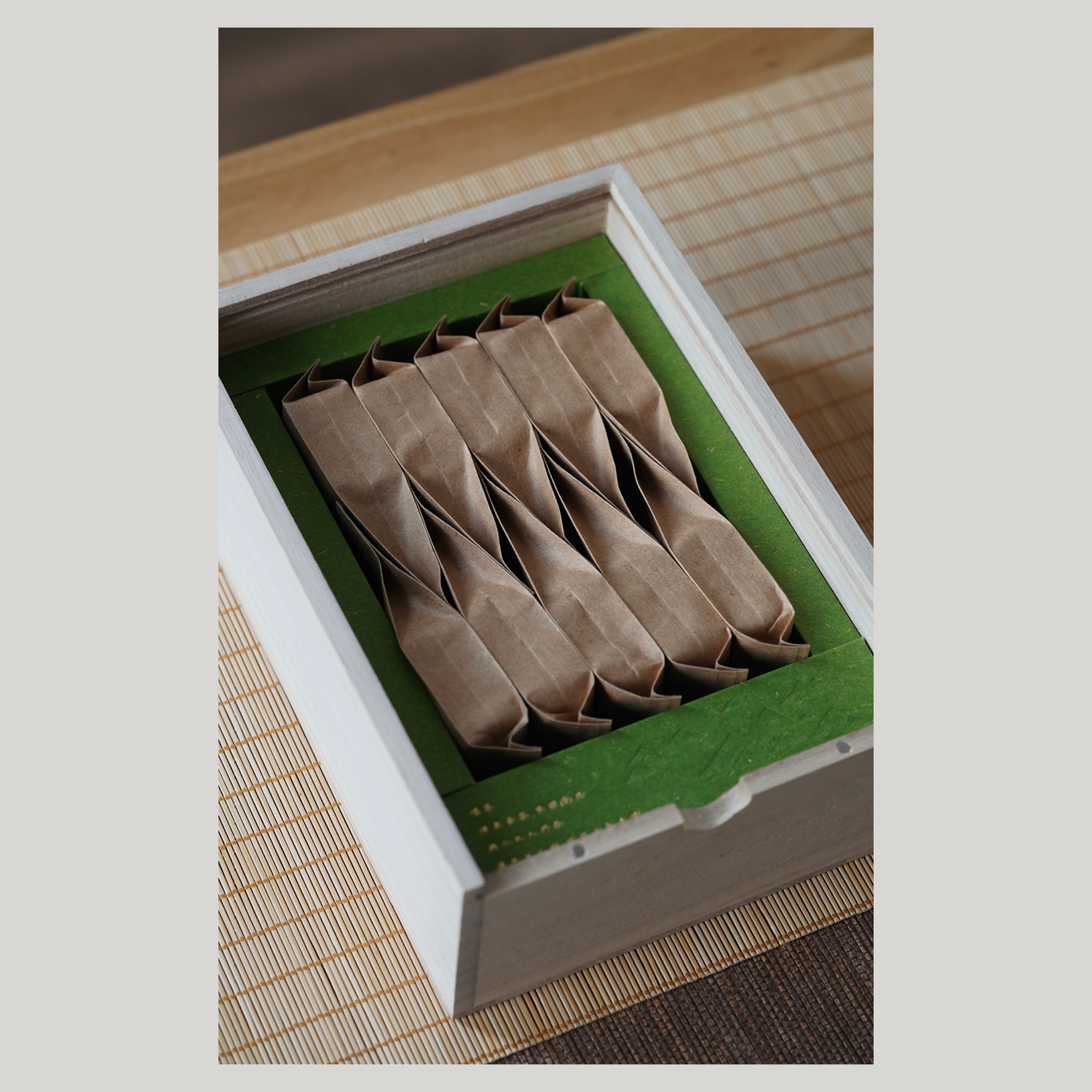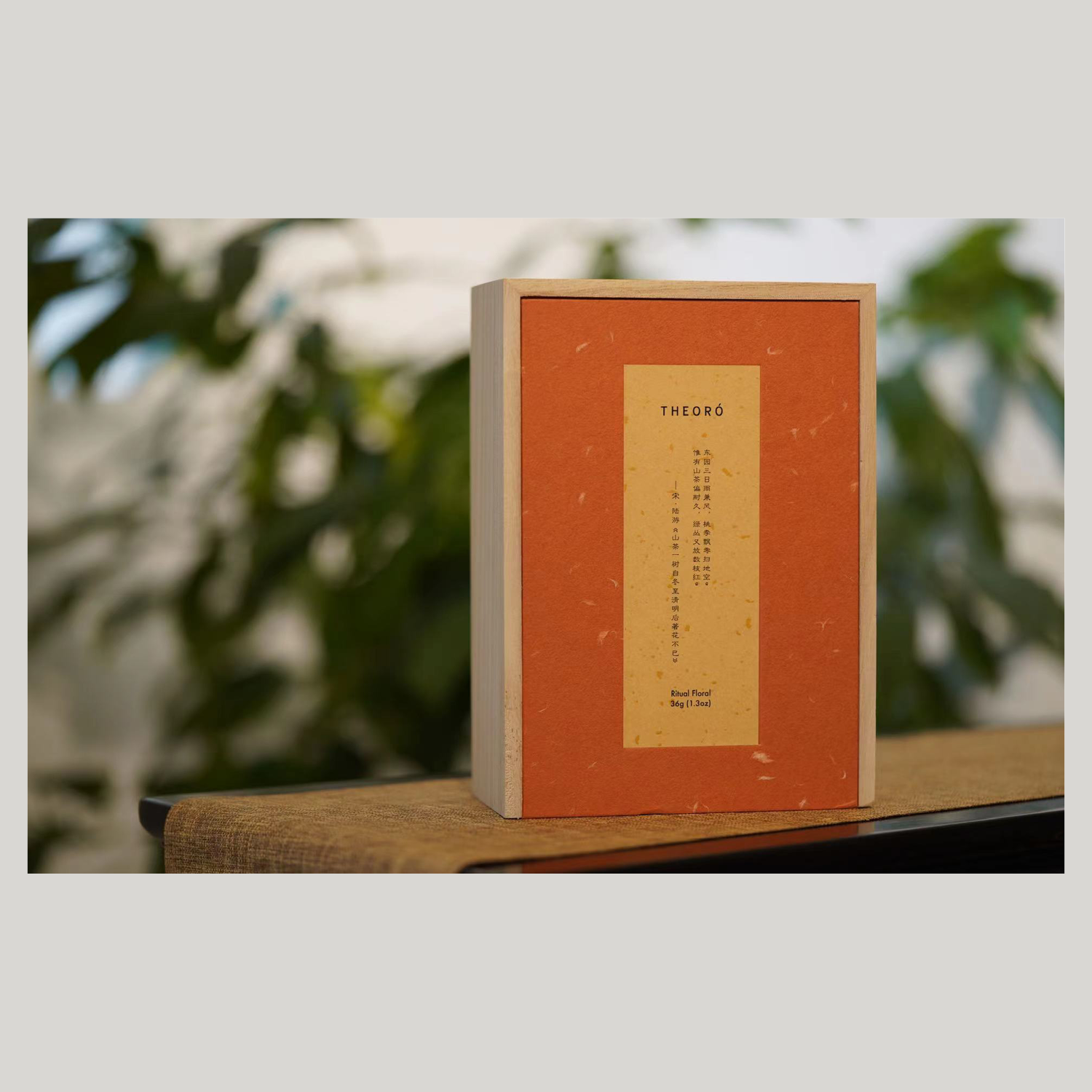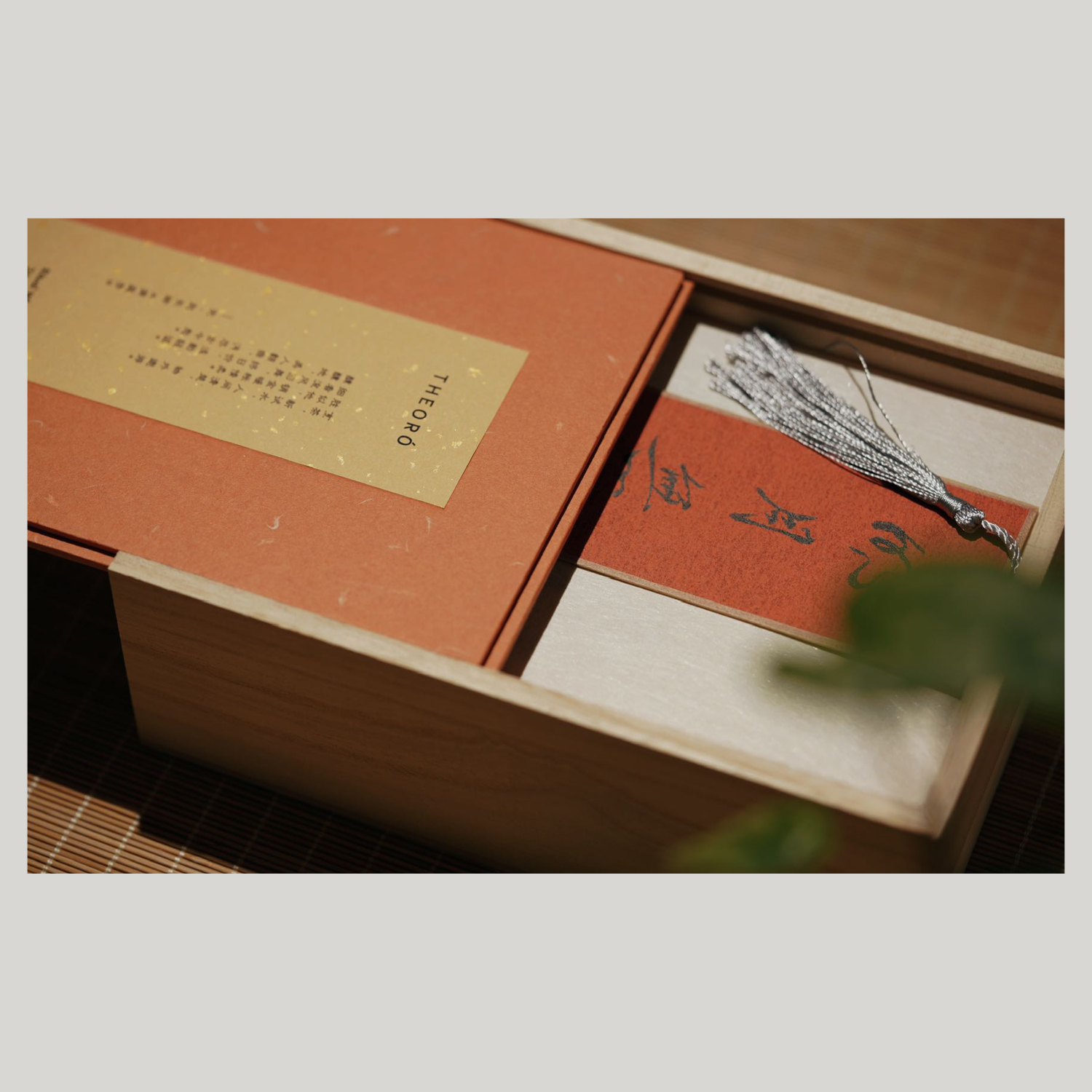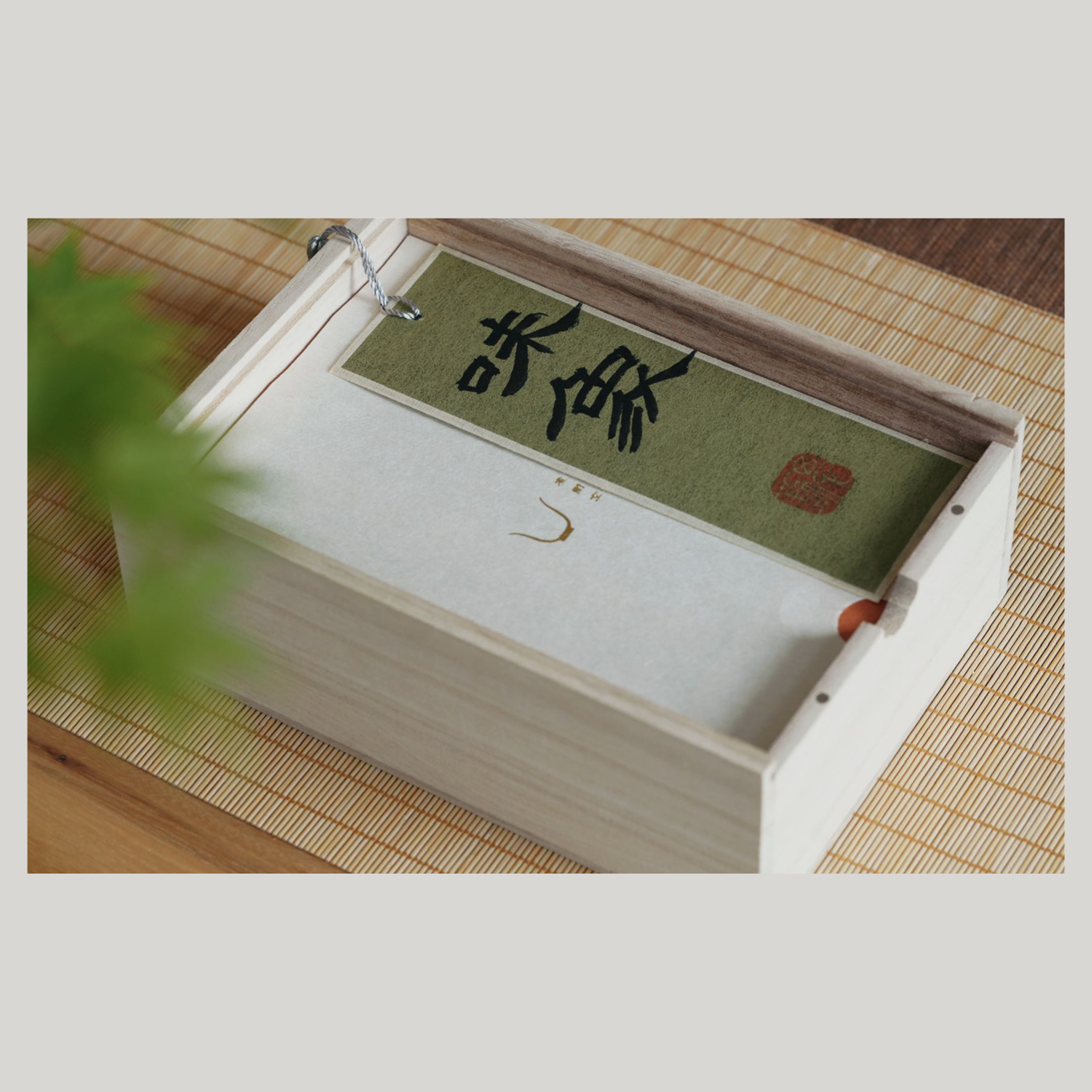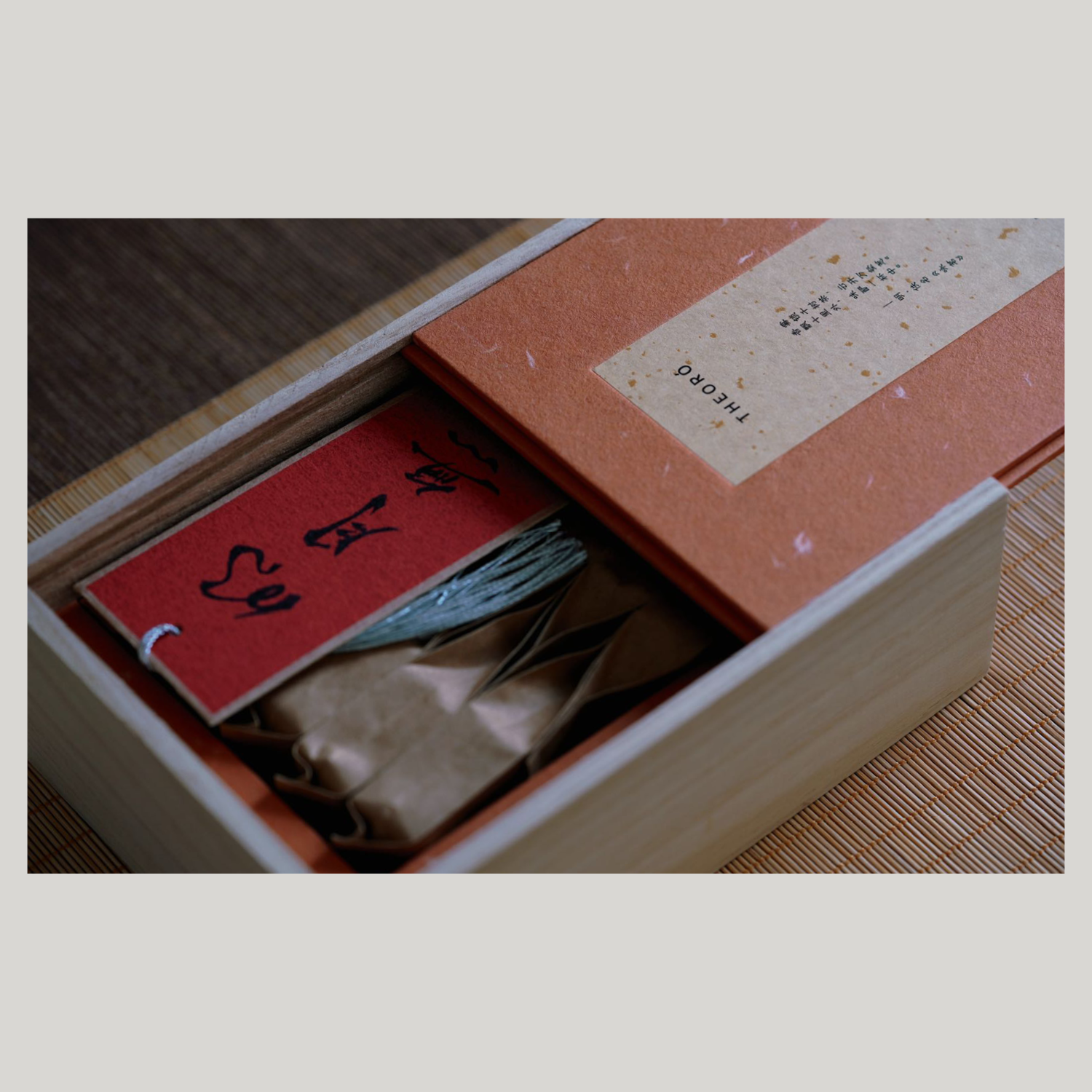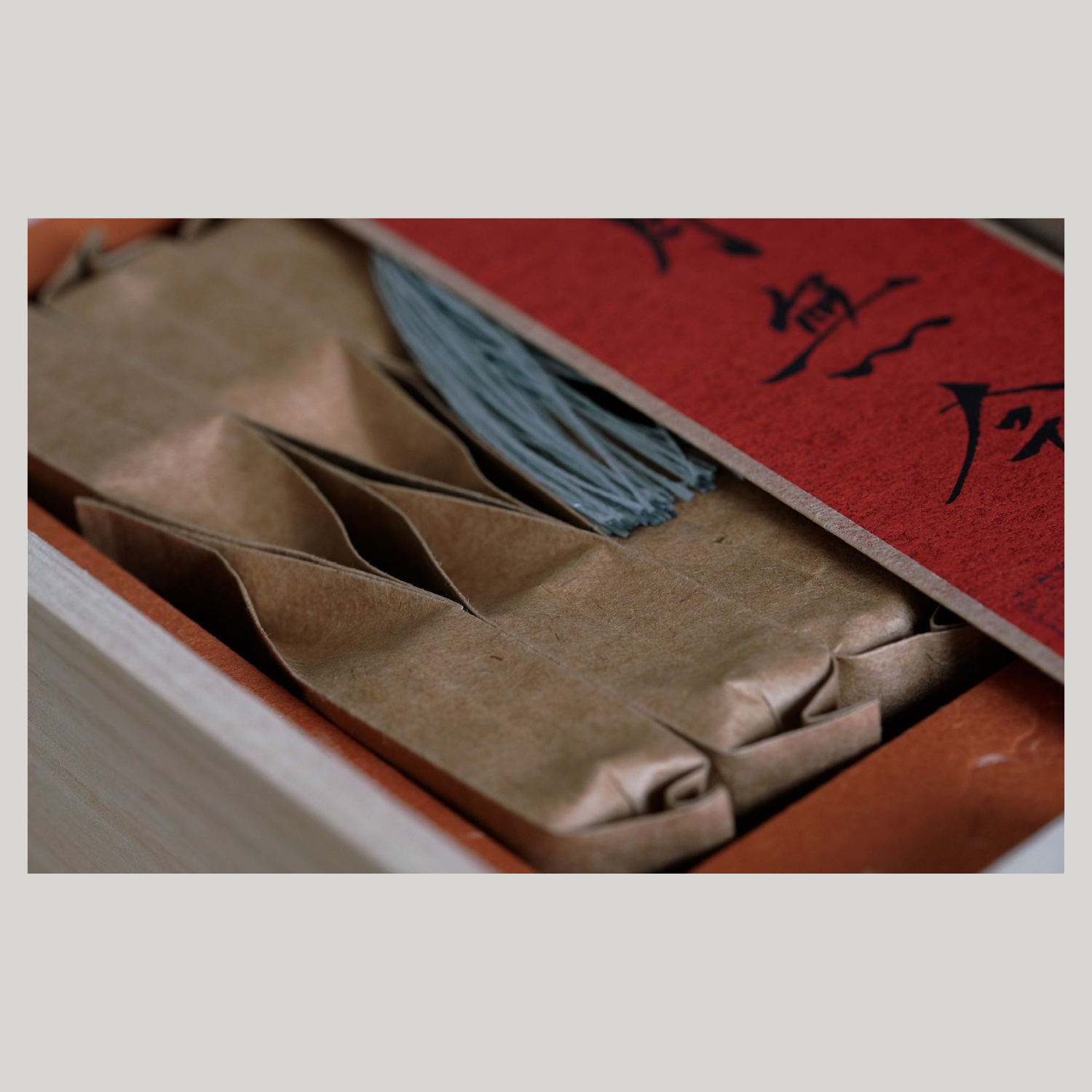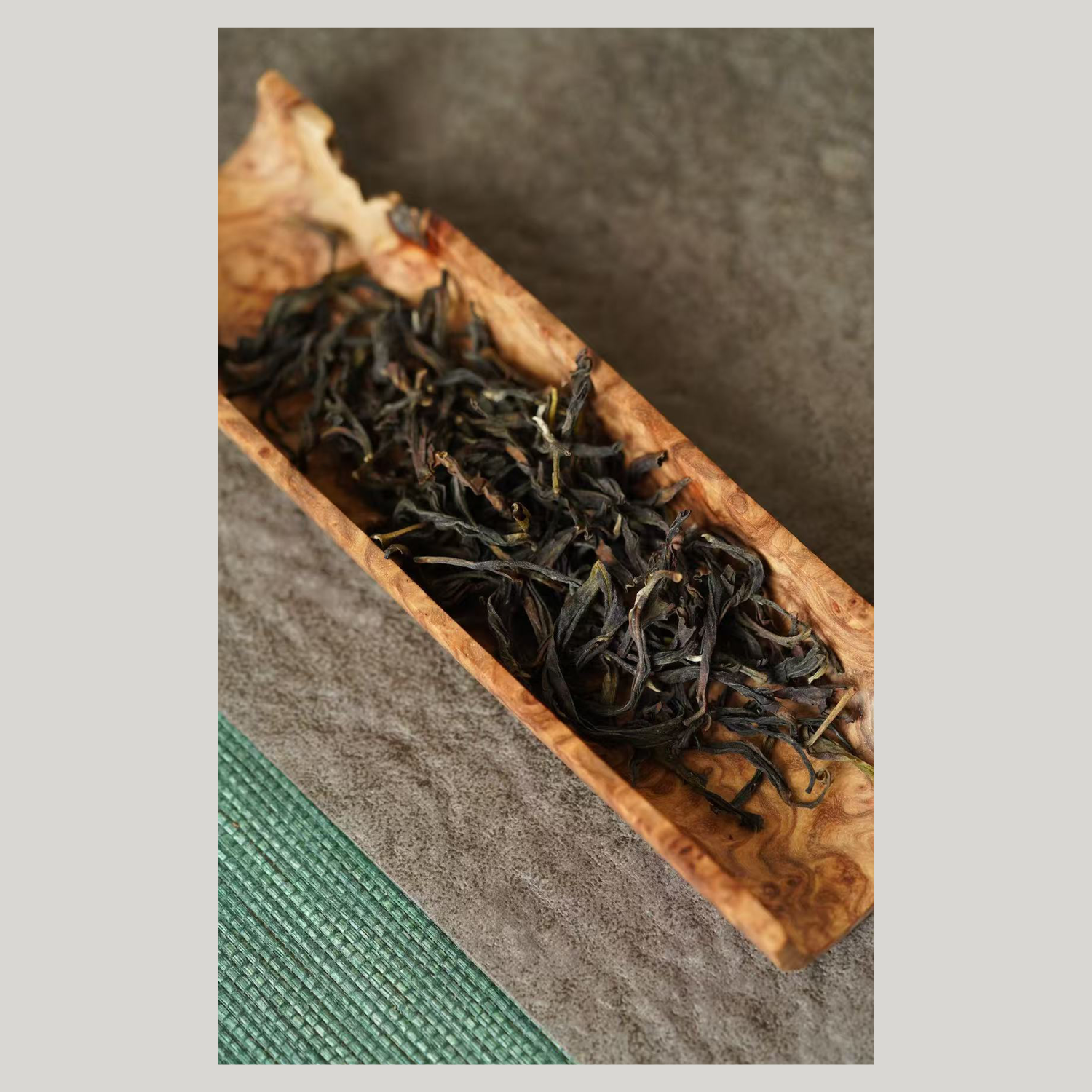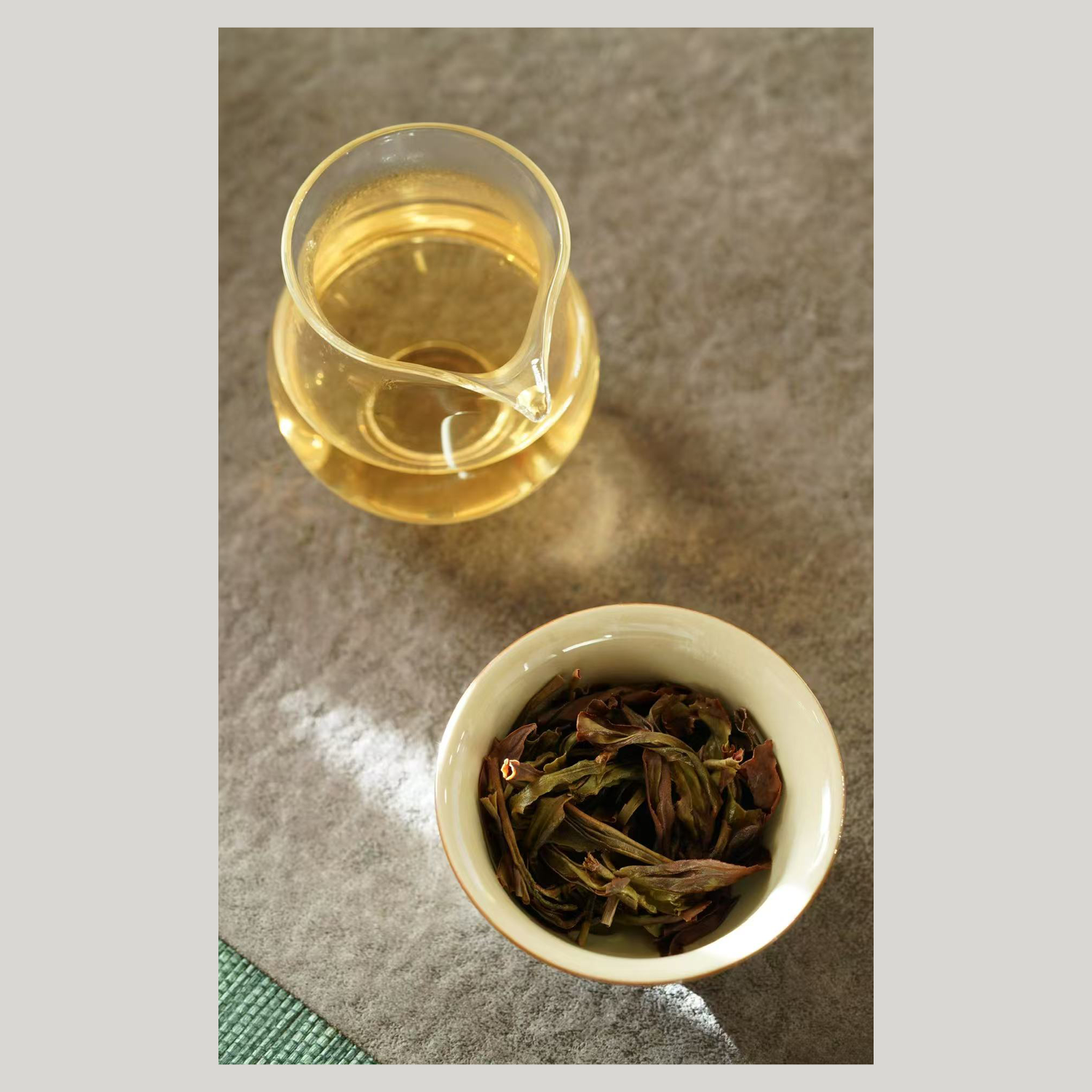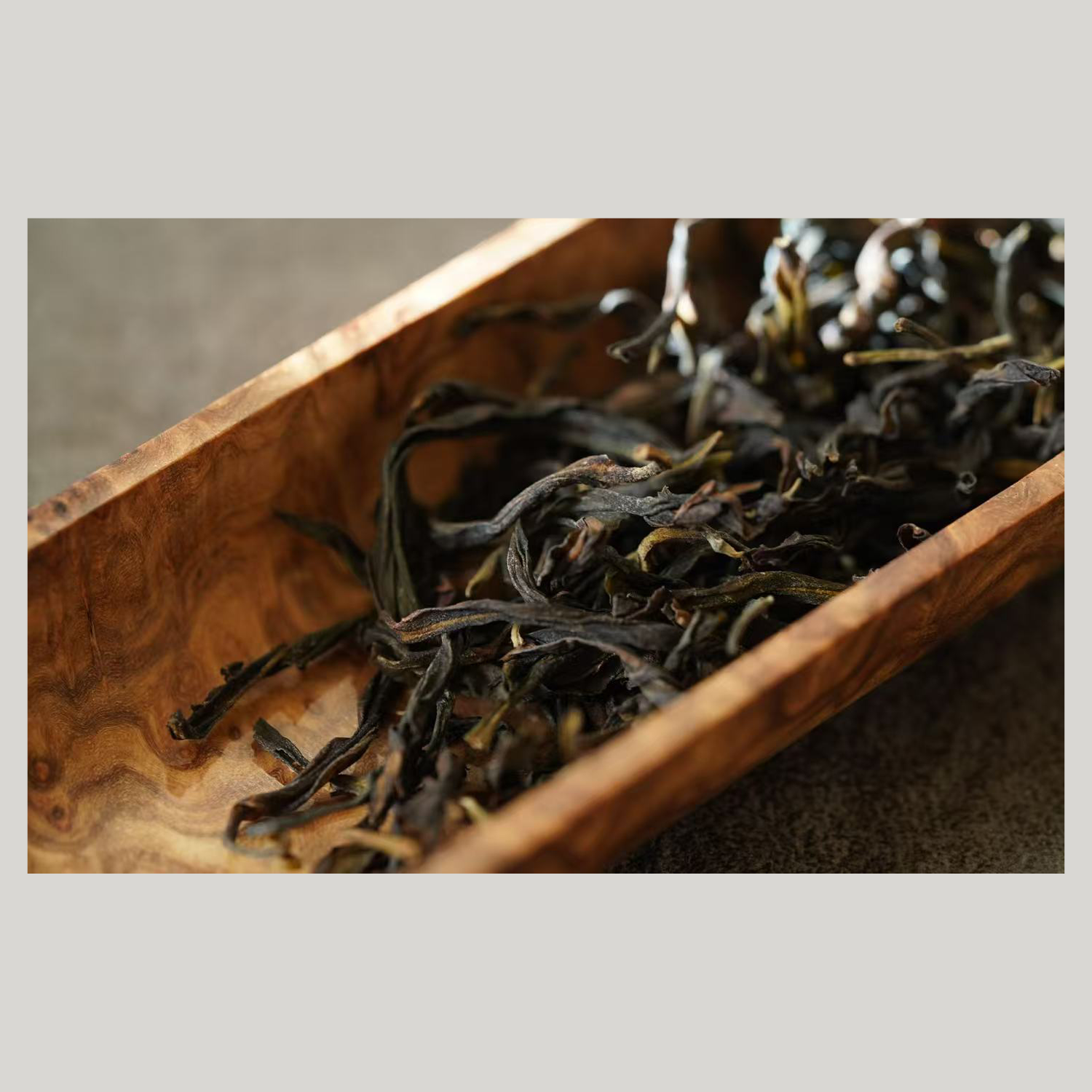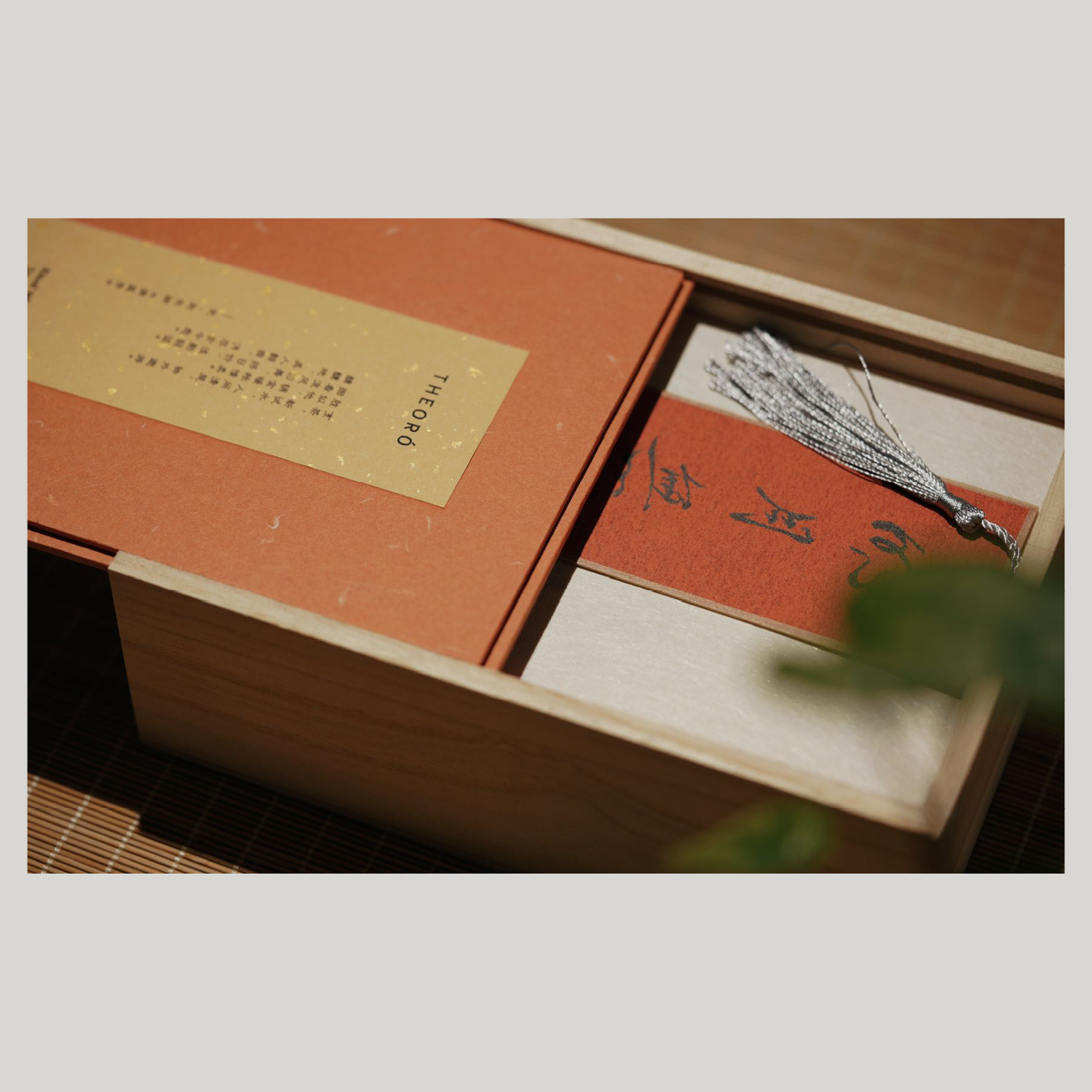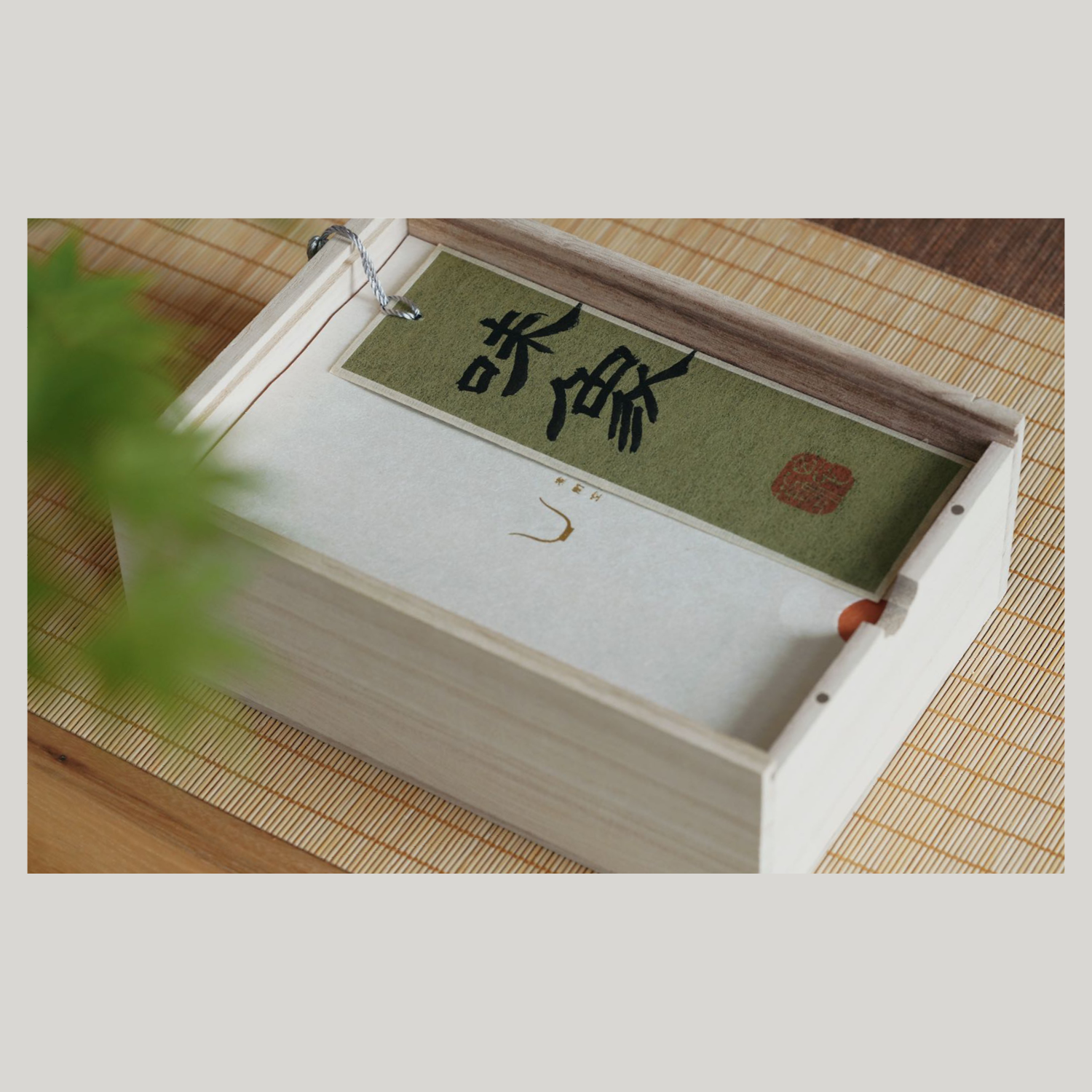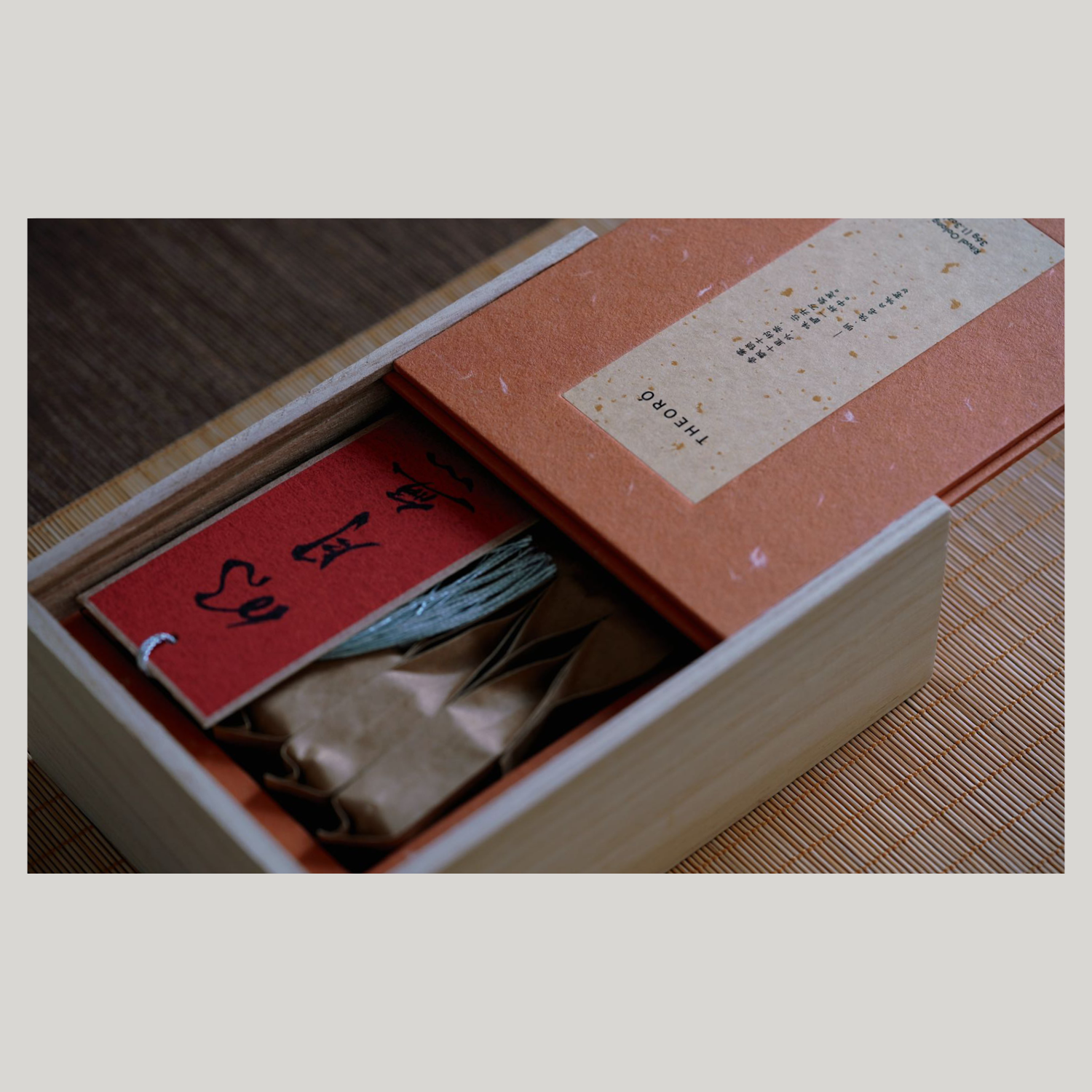 Image 1 of 11
Image 1 of 11

 Image 2 of 11
Image 2 of 11

 Image 3 of 11
Image 3 of 11

 Image 4 of 11
Image 4 of 11

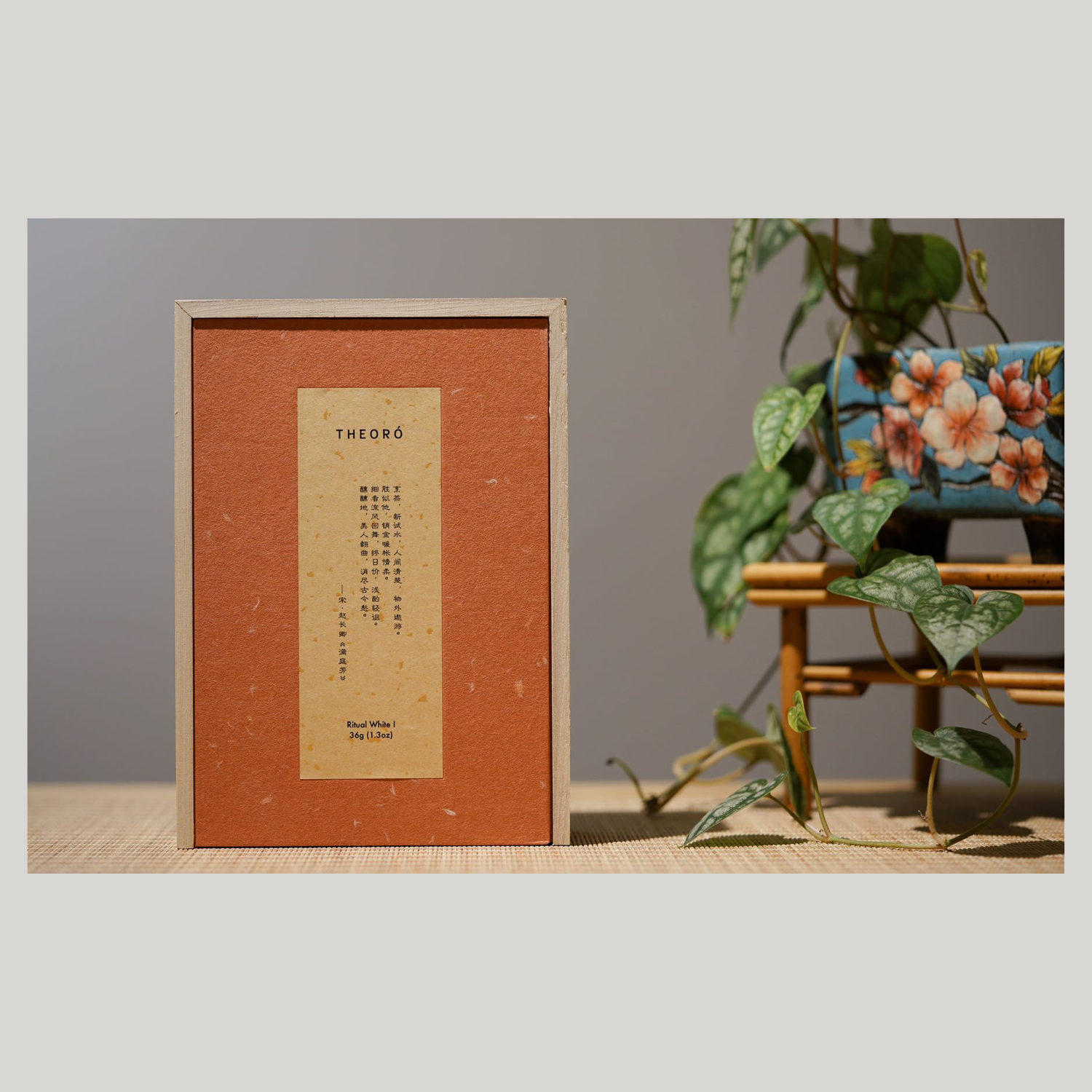 Image 5 of 11
Image 5 of 11

 Image 6 of 11
Image 6 of 11

 Image 7 of 11
Image 7 of 11

 Image 8 of 11
Image 8 of 11

 Image 9 of 11
Image 9 of 11

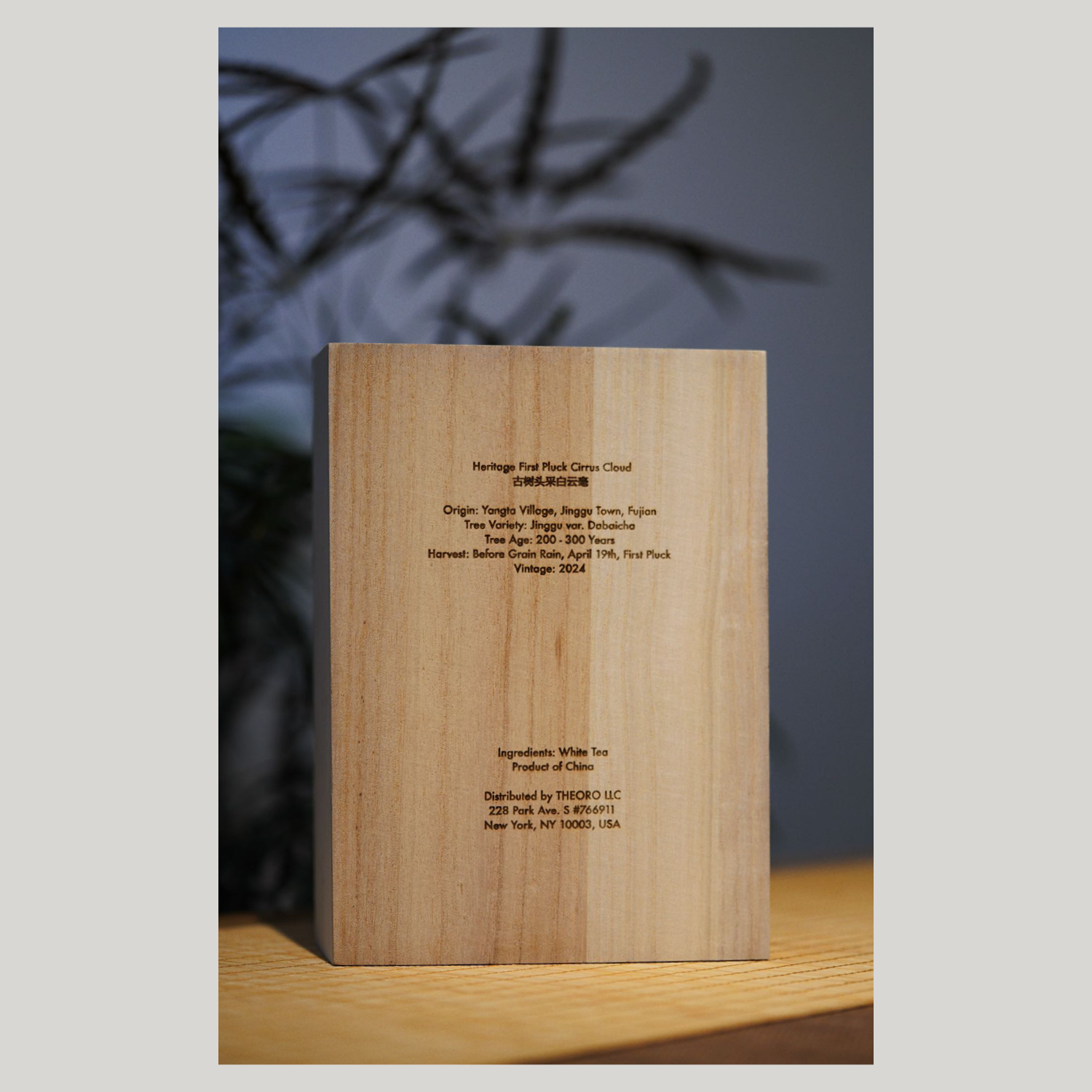 Image 10 of 11
Image 10 of 11

 Image 11 of 11
Image 11 of 11












Ritual White I
Heritage First Pluck Cirrus Cloud
古树头采白云毫
Origin: Yunnan, Jinggu Town, Yangta Village
Tree Variety: Jinggu Camellia Sinensis var. Dabai
Tree Age: 200 to 300 Years
Harvest: Before Grain Rain, April 19th, First Pluck
Vintage: 2024
Each Box: 36g / 10 Packets / Makes 60+ Cups (487+ fl oz)
Each Packet: 3.6g / Makes 6+ Cups (48.7+ fl oz)
Maximum $0.83 per Cup ($1.64 per 16 fl oz)
Heritage First Pluck Cirrus Cloud
古树头采白云毫
Origin: Yunnan, Jinggu Town, Yangta Village
Tree Variety: Jinggu Camellia Sinensis var. Dabai
Tree Age: 200 to 300 Years
Harvest: Before Grain Rain, April 19th, First Pluck
Vintage: 2024
Each Box: 36g / 10 Packets / Makes 60+ Cups (487+ fl oz)
Each Packet: 3.6g / Makes 6+ Cups (48.7+ fl oz)
Maximum $0.83 per Cup ($1.64 per 16 fl oz)
Heritage First Pluck Cirrus Cloud
古树头采白云毫
Origin: Yunnan, Jinggu Town, Yangta Village
Tree Variety: Jinggu Camellia Sinensis var. Dabai
Tree Age: 200 to 300 Years
Harvest: Before Grain Rain, April 19th, First Pluck
Vintage: 2024
Each Box: 36g / 10 Packets / Makes 60+ Cups (487+ fl oz)
Each Packet: 3.6g / Makes 6+ Cups (48.7+ fl oz)
Maximum $0.83 per Cup ($1.64 per 16 fl oz)
Profile
Aroma: Fresh rain, nectar
Flavor: Petal, a single drop of honey, almond
Vitality: Clean mouthfeel, subtle lingering, understated elegance
Mood: Mindfulness, inner peace, detox
enjoyment
-
Water: Spring water or purified water.
Temperature: Approximately 200°F (93°C).
Tea-to-Water Ratio: 1 packet of tea per 1/2 cup of water for each infusion.
Tea Ware: Lidded bowl, small teapot.
Note: The recommended tea-to-water ratio and tea ware above are for the Gongfu brewing method. However, you can also use a more Western-style vessel, such as a large teapot, French press, or a water bottle with a removable filter. Simply match the water amount to the size of your chosen vessel.
-
1 ~ 6: Steep quickly, for about 15 seconds each.
7 ~ 9: Steep for about 30 seconds each.
> 9: Adjust steeping time according to personal preference.
Note: When using a Western-style vessel, adjust the steeping time based on the amount of water. For example, if you’re using a french press that holds 2 cups of water (4 times the volume of 1/2 cup), extend the brewing time for infusions 1–2 to 60 seconds for the Ritual White I.
-
Servings: For optimal enjoyment, use each packet for 12 infusions throughout the day.
Duration: Best enjoyed within 2 day.
When: Avoid on an empty stomach, and if you're sensitive to caffeine, skip it after dinner.
Frequency: In spring and summer, limit to 3 packets per week. In fall and winter, limit to 1 packet per week.
Note: When using a Western-style vessel, adjust the number of infusions based on the amount of water. For example, if you’re using a French press that holds 2 cups of water (4 times the volume of 1/2 cup), aim for 3 infusions per packet for the best experience.
-
Light fare such as fresh vegetables, fruits, and sushi perfectly complements this tea. It also pairs elegantly with Asian pastry.

Legacy
During the Qing Dynasty, specifically in the Daoguang era (1821-1850), tea made from Jinggu Camellia Sinensis var. Dabai was presented as tribute to the Emperor. This esteemed tea, believed to have been offered to Emperor Guangxu, was crafted from only the first pluck of tea buds. The prominent, silvery-white buds, resembling dragon whiskers, earned it the name “White Dragon Whiskers.”
In the Ming and Qing Dynasties, Yangta Village was part of Minglue Town, which was under the jurisdiction of the Tao clan of Jingdong. This hereditary Tao clan, belonging to the Dai people, governed Jingdong for over 500 years and was one of the three major local rulers in Yunnan during the Qing Dynasty.
Each year, the local rulers were obliged to present tributes to the imperial court, predominantly featuring distinguished regional products. Among these, the Tao clan particularly favored White Dragon Whiskers Tea. Initially offered to the Tao clan by local leaders, this esteemed tea was subsequently submitted as a tribute to the Qing court.
Authenticity
-
The “Cirrus Cloud” White Tea is primarily grown in Jinggu Town, Yunnan Province, with Yangta Village being the core cultivation area.
THEORÓ Ritual White I is from Yangta Village.
-
"Cirrus Cloud" White Tea is typically made from Camellia sinensis var. Dabai, with the most authentic varieties grown in their original location, Jinggu, making it Jinggu Camellia sinensis var. Dabai.
THEORÓ Ritual White I is made with Jinggu Camellia sinensis var. Dabai.
-
In the general market, most "Cirrus Cloud" white teas come from trees that are typically under 150 years old. Trees over 200 years old are rare and renowned for producing tea of exceptional quality.
THEORÓ Ritual White I is harvested from trees that are between 200 to 300 years old.
-
To produce Cirrus Cloud, the ideal leaves are picked during the first flush of spring, with preference given to plump buds rich in white down. Within this first flush, the very first pluck of the year is considered the best. Towards the end of spring, the tea is mostly harvested from side buds, which are smaller in size. Tea harvested in summer and autumn typically has thinner, smaller buds and is generally considered lower in quality.
In areas with excellent ecological conditions, the temperature decreases by 1.08°F (0.6°C) for every 328 feet (100 meters) of elevation. As a result, the higher the altitude and better the environment, the later the tea harvest begins. Jinggu Town, with its high elevation of 3,104 feet, usually starts the first pluck of the year around the Grain Rain solar term, which typically falls around April 20th each year.
THEORÓ Ritual White I is made from leaves that are part of the very first pluck of the year, harvested right before Grain Rain, on April 19th.
-
Cirrus Cloud can be enjoyed at its freshest or properly aged. As the tea ages each year, it undergoes a transformation, with the aroma evolving into notes of sweet corn and subtle earthy tones. The flavor becomes more mellow and layered, yet still very enjoyable.
Cirrus Cloud does not have an expiration date. The age of the tea doesn’t determine whether it’s better or worse; it’s simply a matter of personal preference.
THEORÓ Ritual White I is from the year 2024.
Craftsmanship
-
On a cool, sunny day, spread the fresh buds thinly on the withering screen and place them under direct sunlight for drying. After sun withering for a period, the leaves are transferred to a shaded area, rested, then returned to sunlight periodically, with intervals in between. It neither promote nor inhibit the activity of polyphenol oxidase, allowing a natural oxidation process of the internal substances.
During sun withering, the breakdown and transformation of chlorophyll give white tea its characteristic gray-green color. The sweetness of white tea comes from the accumulation of amino acids. After 60 hours of withering, the amino acid content significantly increases, reaching its peak after 72 hours.
When the grassy smell fades, there is no bitterness or astringency, the taste becomes mellow, and a fresh or floral aroma develops, the withering is considered optimal. At this point, the withering process should be stopped promptly, and the tea should proceed to the next phase.
-
Roast-drying is done through charcoal fire, which maintains a lower temperature but requires longer drying times. It halts further oxidation of the tea leaves. This step is critical for shaping the aroma, flavor, color, and overall character of the tea, as well as controlling its moisture content.
Roast drying reduces moisture, eliminates low-boiling-point grassy odors, enhances its fragrance, reduces the bitterness of the tea infusion, and increases its sweetness and smoothness, thereby creating the signature qualities of white tea, such as the white buds, fresh and sweet flavors, and a smooth, refreshing taste.







